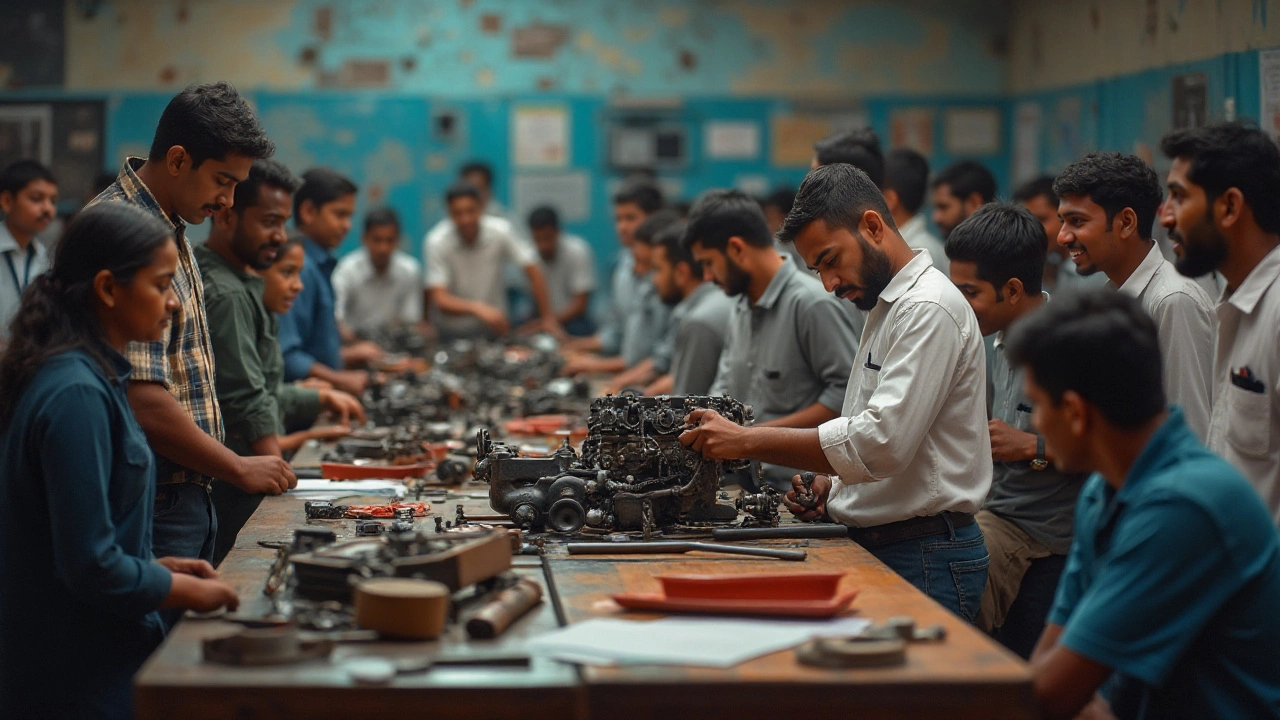Vocational Training in India: What It Is and Why It Matters
If you’re tired of endless theory and want a job that actually uses your hands or mind, vocational training might be the answer. It’s a short‑term, skill‑focused route that prepares you for real‑world work without the years of classroom study.
Unlike a traditional degree, a vocational course zeroes in on specific tasks – like electrician work, carpentry, digital marketing, or hospitality. You spend most of the time doing the job, not just reading about it. That means you graduate with a portfolio, a certificate, and a clearer idea of what you can do for an employer.
Why Choose Vocational Training?
First off, it’s fast. Most programs last six months to two years, so you can start earning sooner. Second, the cost is lower than a four‑year college, which makes it easier on the wallet. Third, employers love it because you’re job‑ready from day one.
India is pushing skill development hard. The government’s Skill India mission and various state schemes pump money into institutes, scholarships, and apprenticeship ties. That means more places to learn and more chances to get a job after you finish.
How to Get Started with Vocational Training in India
1. Identify Your Interest – Think about the work you enjoy. Do you like fixing things, cooking, designing graphics, or helping customers? Write down a few options.
2. Research Courses – Look for accredited institutes that offer the skill you want. Popular choices include NCVT‑approved centers, private training schools, and online platforms that partner with local labs.
3. Check Eligibility and Fees – Most programs accept students after 10th grade. Some require a basic math or English score, but many have flexible entry routes. Ask about scholarships, Government Skill India grants, or employer‑sponsored seats.
4. Enroll and Attend – Once you’re in, treat it like a job. Show up, practice, ask questions, and build a small portfolio of work you’ve completed.
5. Get an Apprenticeship – Many vocational schools have tie‑ups with companies. An apprenticeship lets you earn while you learn and often leads to a full‑time offer.
6. Showcase Your Skills – After finishing, create a simple resume highlighting your certificate, projects, and any real‑world experience. Use platforms like LinkedIn or local job boards to apply.
Remember, the goal isn’t just a piece of paper; it’s the ability to walk into a workplace and add value from the start. If you keep learning on the job, you can move up quickly, add new certifications, and even start your own business.
Ready to take the plunge? Pick a skill that excites you, find a reputable training center, and get hands‑on fast. Vocational training gives you the tools, the confidence, and the paycheck to build the career you want, right here in India.
College vs Vocational Training: Key Differences Explained
Choosing between college and vocational training isn't as simple as picking where to hang out for the next few years. This article breaks down how college and vocational programs really work, what each means for your wallet, and who thrives in these different settings. You'll also find some cool facts about graduation rates, earning power, and even shortcuts to getting a job. If you're figuring out your next step after high school, this guide lays it all out, plain and simple.
read moreVocational Training: What Is It and Who Needs It?
Vocational training is all about equipping individuals with specific skills for particular trades or careers. It focuses on practical, hands-on experience and prepares learners for direct entry into specific professions. From electricians to healthcare aides, vocational courses cover a broad range of careers and are essential for many industries. These courses often offer quicker paths to employment and are a great fit for people who prefer learning by doing. In this article, we'll explore what vocational training entails and why it might be the right choice for you.
read moreUnderstanding Vocational Training: Key Examples and Insights
Vocational training equips individuals with specialized skills for specific careers or trades. Unlike traditional academic pathways, vocational programs focus on hands-on experience and practical knowledge immediately applicable to various industries. Popular examples include certifications in nursing, culinary arts, automotive repair, and technology sectors. By providing a direct path to employment, vocational training addresses skills shortages and enhances employability in today's dynamic job market. It is an essential educational alternative fostering both personal growth and economic advancement.
read moreUnderstanding Vocational Qualifications: Your Guide to Career-Specific Skills
Vocational qualifications are designed to equip individuals with the practical skills and knowledge required for specific careers. Unlike academic courses, vocational training focuses on hands-on experience and industry-specific competencies. They're a great option for those who prefer practical learning and wish to enter the workforce quickly. These programs often lead to recognized certifications, making them invaluable for career progression. Understanding the structure and benefits of vocational qualifications can help you make informed career decisions.
read more


